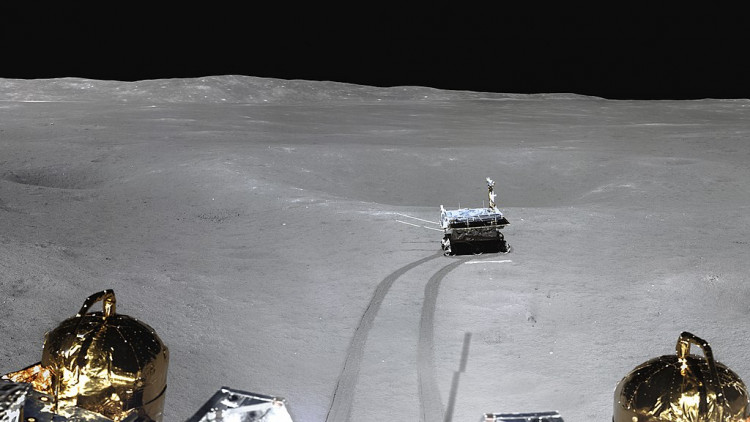In January 2019, China's Yutu 2 rover and Chang'e 4 lander touched down in Von Kármán Crater and have since been pursuing exploration and scientific objectives there.
According to a rare mission report, the first robots to ever land safely on the far side of the moon are quietly continuing their work.
There hadn't been any updates on the pair's progress in recent months, but one that coincided with the Mid-Autumn Festival, or Moon Festival, on the Chinese calendar shows that all is fine with the solar-powered craft.
According to CCTV, the six-wheeled, roughly 309-pound Yutu 2 has driven nearly 4,265 feet in its 3.5 years on the far side of the moon. NASA's Lunar Reconnaissance Orbiter has also tracked it from orbit.
The rover features a panoramic camera, which it notably used to spot what was initially characterized as a "mystery hut" but turned out to be a rabbit-shaped rock.
Another discovery was a handful of shards of rock poking out of the surface, referred to as a "milestone" by Our Space. While seemingly little, such boulders stand out on a surface that has been crushed over billions of years by both micrometeorites and intense solar radiation.
Large rocks are typically signs of impact action when Yutu 2 finds them. As was the case with a collection of relatively recent rocks discovered in early 2020, these rocks offer hints about the history of the moon and the composition of material extracted or ejected by impactors.
A number of intriguing discoveries on the far side of the moon have been made by Yutu 2, which is also outfitted with a lunar penetrating radar, an infrared imaging spectrometer, and a neutral atom detector jointly developed with Sweden.
The lander is equipped with scientific tools and has advanced our knowledge of the moon's far side.
The lunar far side is never visible from Earth; it was not observed until the Soviet Union's Luna 3 spacecraft orbited the moon in 1959. As a result, Chang'e 4 and Yutu 2 cannot transmit data directly to Earth and must rely on a relay satellite beyond the moon to ease communications between the spacecraft and its operators. Queqiao, the relay satellite, also collects data on its own, thanks to a ground-breaking low-frequency astronomy equipment.
Chang'e 6 is expected to be China's next lunar mission. The spacecraft will seek to collect samples from the far side of the moon and will also require communication with Earth via Queqiao or another satellite.




